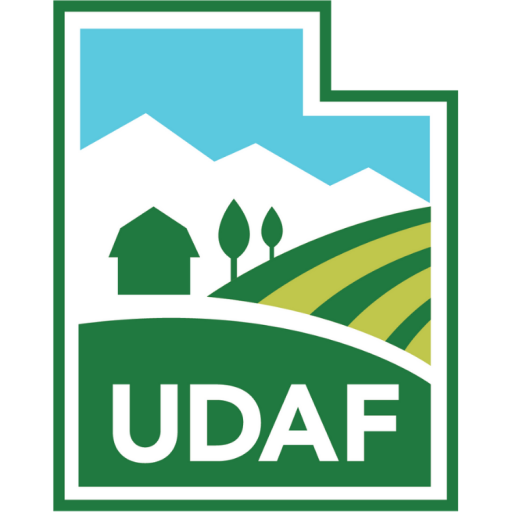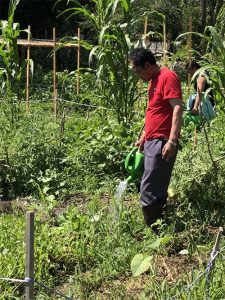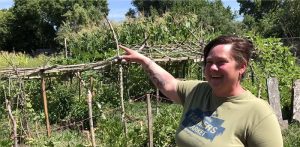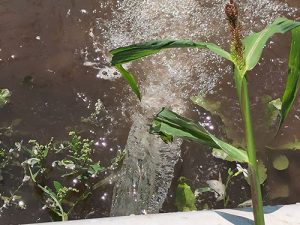
Commissioner Kerry Gibson
As September is National Suicide Awareness Month, the Utah Department of Agriculture and Food (UDAF) is partnering with the Cattleman’s Association, USU Extension, and other industry organizations to create a stronger connection between existing programs and resources available for agriculture producers in crisis.
Together, we are circling the wagons around all who are experiencing a sense of hopelessness. Regardless of one’s station in life, profession, or religious preference, suicide is far too frequent in Utah. When times get tough, the lives of every citizen matter and far too many of our precious family, friends, and neighbors are not feeling that. I have seen it first-hand in my own life and I know many of you have as well.
When it comes to agriculture, there are no shortages of challenges for farmers and ranchers between access to market issues, weather, pests and diseases, regulatory changes, and trade policy. According to the latest USDA Agriculture Census, 56% of US farmers report a net loss in cash income on their farms. But worse than that, in Utah, that number rises to 65%.
One of my most important messages and efforts as Commissioner will be to ensure we are doing more to love and care for one another as communities. We must do more to extend resources and programs out to the farmers and ranchers experiencing pressures that lead to hopelessness, depression, and thoughts of suicide.
In Proverbs 27:23 it states, “Be thou diligent to know the state of thy flocks, and look well to thy herds.” Through our partnerships and outreach efforts, we are circling our wagons around those who need it most and encourage you to join us. Be a listener, an encouraging, and a helping hand as there is no shortage of work that can be done here.
I’m optimistic that if we can all do a little more, in close coordination with our available resources and professional partners, that we can turn this trend around. It’s we do things here – it’s the Utah way.
Please allow me to share below some of the resources available in Utah right now that we have posted below. If you would like to join our circle of wagons to suggest additional resources, please call me personally at 801-538-7100.
- Generalized behavioral health resources available to all citizens through county health departments, and numerous private behavioral health specialists;
- Religious community programs of support and counseling, along with their directives to locate qualified licensed counseling for those seeking help;
- Farmerhealth.org, an international organization dedicated to helping farmers with all kinds of health issues, including behavioral health;
- 2018 Farm Bill allocated $10 million for five years to create a Farm and Ranch Assistance Network Program in four regions of the country;
- The Utah Department of Agriculture and Food has two financial assistance programs available to farmers and ranchers to improve the economic viability of their operations: the Agriculture Resource Development Loan Program (ARDL), and the Rural Rehabilitation Loan fund;
- FarmAid.org, a national organization that is equipped to helping farmers who are struggling with behavioral health issues and more at 800-FARM-AID; and
- Utah Suicide Prevention Coalition has a hotline and can direct to additional resources at 800-273-TALK (8255).



 Don’t be surprised some evening if, in a quiet Logan neighborhood on a back vacant lot between homes, you hear the excitement of Burmese children playing as they gather with parents and grandparents to tend their community garden plots, tell stories, play and dine together.
Don’t be surprised some evening if, in a quiet Logan neighborhood on a back vacant lot between homes, you hear the excitement of Burmese children playing as they gather with parents and grandparents to tend their community garden plots, tell stories, play and dine together. “The first year before the irrigation system was installed they were getting water from a ditch with buckets,” says Crista Sorenson, Cache Refugee Immigration Garden Coordinator and USU Extension Incubator Farm Manager. “But now, with this new system, we are educating them about overwatering as it only takes about 15 minutes to saturate their plots and significantly increase their production.”
“The first year before the irrigation system was installed they were getting water from a ditch with buckets,” says Crista Sorenson, Cache Refugee Immigration Garden Coordinator and USU Extension Incubator Farm Manager. “But now, with this new system, we are educating them about overwatering as it only takes about 15 minutes to saturate their plots and significantly increase their production.” Sorenson said that presently the gardeners are getting acclimated to what grows well in the shortened Cache Valley growing season, and learning about local foods that grow best. However, she hopes to introduce them to concepts of marketing their goods at the Cache Valley Farmer’s Market, CSAs, and roadside stand opportunities in the years ahead.
Sorenson said that presently the gardeners are getting acclimated to what grows well in the shortened Cache Valley growing season, and learning about local foods that grow best. However, she hopes to introduce them to concepts of marketing their goods at the Cache Valley Farmer’s Market, CSAs, and roadside stand opportunities in the years ahead.




